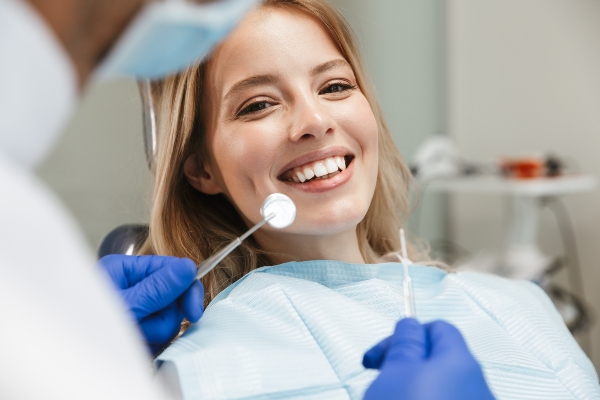 Orthodontics can be used to treat a variety of teeth alignment issues, like a crossbite or crooked teeth. The alignment of a person’s teeth plays an important role when it comes to their oral and overall health. A person has a bad bite when some or all of their teeth do not come together as they should when the mouth is closed.
Orthodontics can be used to treat a variety of teeth alignment issues, like a crossbite or crooked teeth. The alignment of a person’s teeth plays an important role when it comes to their oral and overall health. A person has a bad bite when some or all of their teeth do not come together as they should when the mouth is closed.
This often leads to a range of problems, from not being able to properly chew food to ruining the way that the person’s smile looks. Fortunately, orthodontics provides dentists with various options when it comes to correcting problems with their patients’ teeth alignment.
Common teeth alignment issues that orthodontics can fix
Dealing with poorly aligned teeth? Here are common teeth alignment issues that orthodontic devices like braces can correct.
1. Crossbite
A person is said to have a crossbite when their upper set of teeth sits on the inside of the lower set when their mouth is closed. The issue might only affect a tooth or an entire set of teeth. When left untreated, a crossbite can lead to other problems, such as uneven jaw development, worn-down teeth enamel, and unbalanced jaw movement.
A patient has a subsequent crossbite when their upper teeth at the back sit inside the bottom teeth. A frontal crossbite occurs when the top teeth sit behind the bottom teeth.
The severity of a patient’s condition often determines how a dentist approaches treating their crossbite. Clear aligners can be used if the patient’s issue is not caused by their jaw being in the wrong position, while braces can be used in all cases.
2. Underbite
An underbite occurs when the lower set of teeth protrude past the upper set. It creates a “bulldog” type of look, with the patient appearing to frown whenever their face is in a neutral position. The condition puts stress on a person’s teeth and often leads to teeth wearing down or becoming damaged. The condition also weakens the temporomandibular joints (TMJ), increasing the risk of TMJ-related issues developing.
Braces are required to treat severe underbites because there might be a need to move the position of the patient’s jaw. Minor cases can be treated with clear aligners.
3. Open bite
A frontal open bite occurs when the upper and lower jaws do not extend as far out as they should. The condition can be the result of mouth breathing, tongue pushing, or extreme thumb sucking. A posterior open bite occurs when only the back teeth fail to extend as they should.
An open bite often leads to tongue thrusts, speech issues, and difficulty swallowing. Minor cases can be treated with clear aligners, while severe cases require braces and other appliances that can move the patient’s jaw.
Get straighter teeth
Dealing with poorly aligned teeth? Call or stop by our Union clinic to learn more about how our dentist can fix a range of orthodontic issues.
Request an appointment or call Trielle Orthodontics at 908-344-3388 for an appointment in our Union office.
Related Posts
Orthodontics typically involves wearing oral appliances like braces or clear aligners in order to straighten teeth. These devices work by constantly pushing on the wearer’s teeth, moving them to more desirable positions over time. Teeth misalignment can lead to a less aesthetically pleasing smile and a variety of oral issues, like gum disease. Getting appropriate…
Oral hygiene is vital when you are straightening your teeth with orthodontics. Oral appliances used to straighten teeth like braces and clear aligners can get in the way of oral hygiene. These appliances, braces in particular, can also increase your risk of oral issues like tooth decay.The oral appliances used to straighten teeth can increase…
Treatment with orthodontics can typically take somewhere between 12 to 36 months, and many people would be happy to shorten that length. Orthodontics is used to address issues with a person’s teeth or jaw alignments, like a crossbite, underbite, or overbite. Oral appliances, like braces and clear aligners, are often used to push misaligned teeth…
